[click on blue links for more information]
All you need to know about Keynesian economics can be summed up in one statement: What goes around comes around.
Several years ago, I came across a small isolated town and stopped for gas. Being an economist, I naturally wondered how people survived in such a place. I asked the attendant: “So, what do people DO here?” He took a minute to think over the question, then responded with an answer that sums up Keynesian economics in a slightly different way: “I guess we all live off each other.”

Sea Gull Cellar Bar Napkin Art, Jack Haye artist
And that’s exactly the point the famous economist John Maynard Keynes made in his book written in 1936 with his prescription for the government to spend when the public won’t as a means of combatting the Great Depression. My spending is your income and your spending is my income, spending and income going around in a virtuous circle until something interrupts the flow. Keynes thought the government could help by starting up the flow again if and when it stopped.
During my time as owner and operator of the Sea Gull Restaurant in Mendocino, I experienced first hand the realities of Keynesian economics. What goes around does come around.
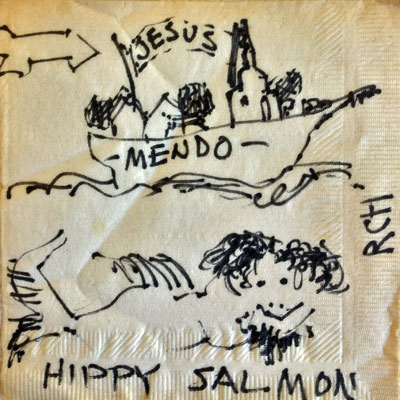
Sea Gull Cellar Bar Napkin Art, Roy Hoggard artist
Economics got a bum rap from the 19th century philosopher, Thomas Carlyle, who called it “the dismal science.” It is commonly thought that Carlyle was referring to Thomas Malthus. Malthus argued that population increases faster than food production keeping people at or near subsistence. Malthus did say this and it is dismal although not as true today as it was then. But, that is not what Carlyle had in mind. Today it is acknowledged that Carlyle, a believer in slavery, and was disappointed that economic theory provided no justification for slavery. In fact, economic theory argued just the opposite, that slavery was wrong. That’s why Thomas Carlyle called economics the dismal science. Now that I know the true story, I think a better name for economics is the happy science.

Sea Gull Cellar Bar Napkin Art, artist unknown
It was the happy science that I witnessed while running the Sea Gull. Four groups interact in any business: owners, employees, suppliers, and customers. “What goes around comes around” and “we all live off each other”, i.e. Keynesian economics, is well demonstrated by a few stories about the interactions between these four groups at the Sea Gull Restaurant.
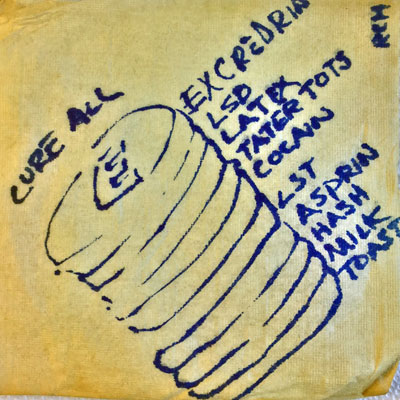
Sea Gull Cellar Bar Napkin Art, artist Roy Hoggard
Frank Porro became the sales representative for Redwood Liquors after retiring as the Mayor of Willits. He was a likable guy as you might expect for a politician but more importantly he was a genuinely good person. I ordered beer, wine and hard liquor from a variety of companies. Redwood Liquors was a little late to the show, but because Frank was such a great guy, I always found something to order from him. One week I gave him a particularly large wine order that probably made his day, if not his month.
A couple of weeks later, I went on holiday with my family. We drove to British Columbia. We stopped for gas in Crescent City. I was tired, having worked several days straight, my wife drove the car for the next stretch and I went to sleep in the back seat. Just outside of Gasquet, I woke up as the car came to a sudden, unexpected stop. My mechanical skills are nonexistent, but I climbed out of the car and opened the hood to inspect things as if I knew what I was doing. I checked the wires and banged on a few things that looked as if they might need banging on. Nothing. The car would not start.
I stood back from the car with my hands on my head in a panic with no idea what to do. A car zipped by on the freeway, then stopped a hundred yards ahead. It slowly backed toward me. “Ah, a good Samaritan,” I thought.

Sea Gull Cellar Bar Napkin Art, Jack Haye artist
Lo and behold, the man emerging from the driver’s side was … Frank Porro. He recognized me as he was driving by with his wife on the way to Grants Pass. He drove me into Gasquet where I phoned a tow truck. He took me back to my car and waited with us exchanging stories and jokes until the tow truck arrived. Yep, what goes around comes around.
One of the things I often said at the Sea Gull was that I had a maintenance crew on site. Whenever we were open there was always an electrician, a carpenter, or a plumber in the coffee shop. For those of you who may not know, restaurants are problem prone. The hood fan always seemed to stop working in the middle of a busy breakfast or dinner. The dishwasher went on the blink just as the dishes were all dirty and piled up. (Often a simple flick of the two-way switch would get it going again but usually it was the rubber coupling that disintegrated. I finally learned how to change that myself, one of the highest mechanical accomplishments I ever achieved in my entire life.) The refrigeration seemed to flounder just after a big delivery of fresh products that had to be refrigerated immediately. Even a leak in the roof could manifest at just the wrong time. Thank God for the coffee shop crowd. Yep, we all live off each other, just like Keynes said.
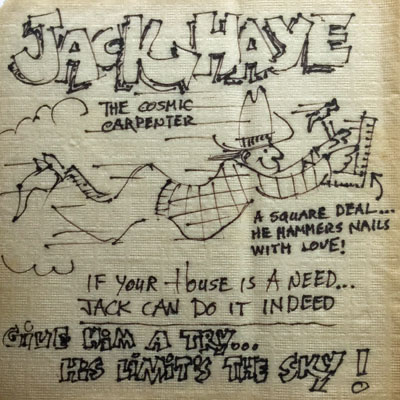
Sea Gull Cellar Bar Napkin Art, Jack Haye artist
One afternoon, the hostess came to the wine storage room to tell me Mr. Seghesio was out at the register with some wine he wanted me to try. “Mr. Who?” I didn’t have a clue who he was. I was busy stacking boxes and organizing the wine room. I told her to tell him to leave a couple of bottles and I’d get back to him. A few minutes later he showed up at the door of the wine room in an angry mood.
“I don’t leave my wine for people to taste. I insist on tasting it with them.”
This disturbed me. I was in the middle of a big job. But, wanting to be polite to this 60 year-old Italian grape farmer whom I had just met, I wiped off my hands and led him to an empty table in the dining room. We proceeded to taste a couple of wines and I put in an order for a mixed case just to get him out of my hair. He mentioned that he’d like very much like to give me a discount but that it required at least a five case order. After tasting a few more wines, I took a chance and ordered five cases, anxious to get back to my job. He then said he could give me a much bigger discount if I could see my way to a 100 case order. He recommended I try the Seghesio bulk wine. He thought it would make a perfect house wine for the Sea Gull. By this time I realized I was not going to get rid of him easily, so I ordered lunch for the two of us. He was the most formidable salesman I’d ever met. Before I could say Eugenio Pio Seghesio, I was the proud owner of 100 cases of Seghesio wine to be delivered over a period of time since I had no place to store it and no way to pay for it. When my wife arrived, “Pete” and I had, as they say, a glow on. The two of us laughed about that at several Winesong events for years to come. He sent a lot of folks to eat at the Sea Gull. You know, what goes around comes around.

Sea Gull Cellar Bar Napkin Art, Mike Evans artist
Many of the food and beverage suppliers were regular patrons. Clyde Ware, our local vegetable man, came in with his wife Brenda. He always ordered Old Taylor and soda followed by Chicken Kiev and Green Hungarian wine. The previous owner took a liking to Hungarian wines, Green Hungarian and Egri Bikavér (Bull’s Blood). Clyde fancied Green Hungarian above all others. We ordered much of our meat from a Santa Rosa company founded by George Woogerd. When George and his crew delivered, they all stopped by for lunch to eat Mary Lou’s specials. Most of the shop owners around town as well as many of the schoolteachers ate at the Sea Gull. Of course, the employees and I would shop locally and send out kids to the local schools. What goes around comes around.
The most significant example of what goes around comes around occurred in the aftermath of December 12, 1976. That was the day the old Sea Gull burned to the ground. An entire community of employees, customers, and even strangers rallied to help build a new Sea Gull. It was a beautiful thing to see.
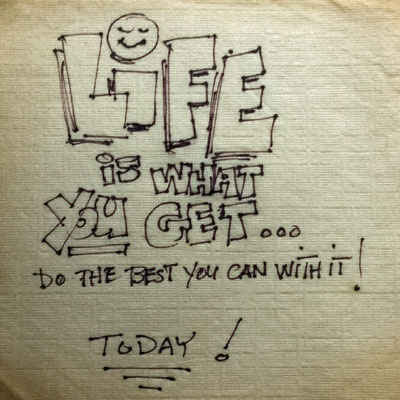
Sea Gull Cellar Bar Napkin Art, Jack Haye artist

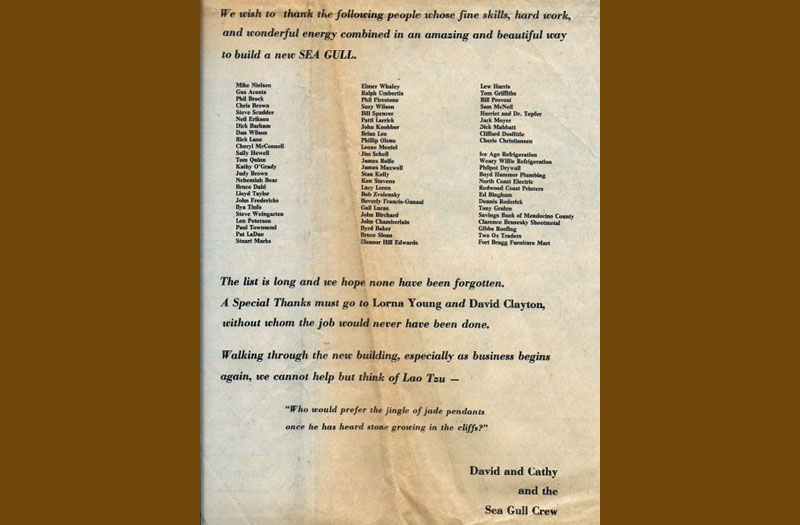
Great story.
Terry
Dave….I truly understand maintenance in a restaurant or a bar…..ALWAYS something going wrong or not quite right! Great story…..I just really like this Blog…you rock.
Thanks Matt !
If Keynes only had had the insight as clearly as you- The world would have known his great work as ” What goes around comes around”!! Simple, easy and perfect.
Anyway, this one was really touching and warm. Loved it.
Thank you Jack. I miss our office meetings. Hope you had a great holiday.
Keep it up, David!
You were the best boss, EVER.